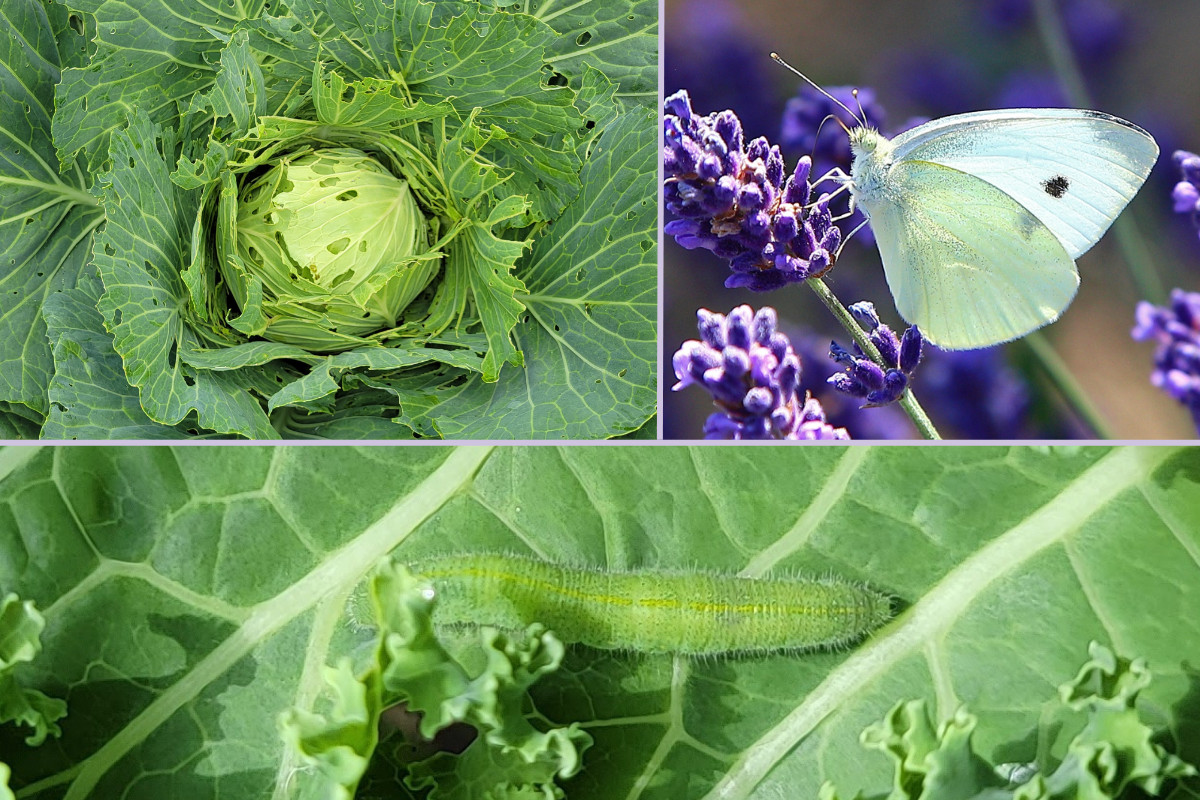
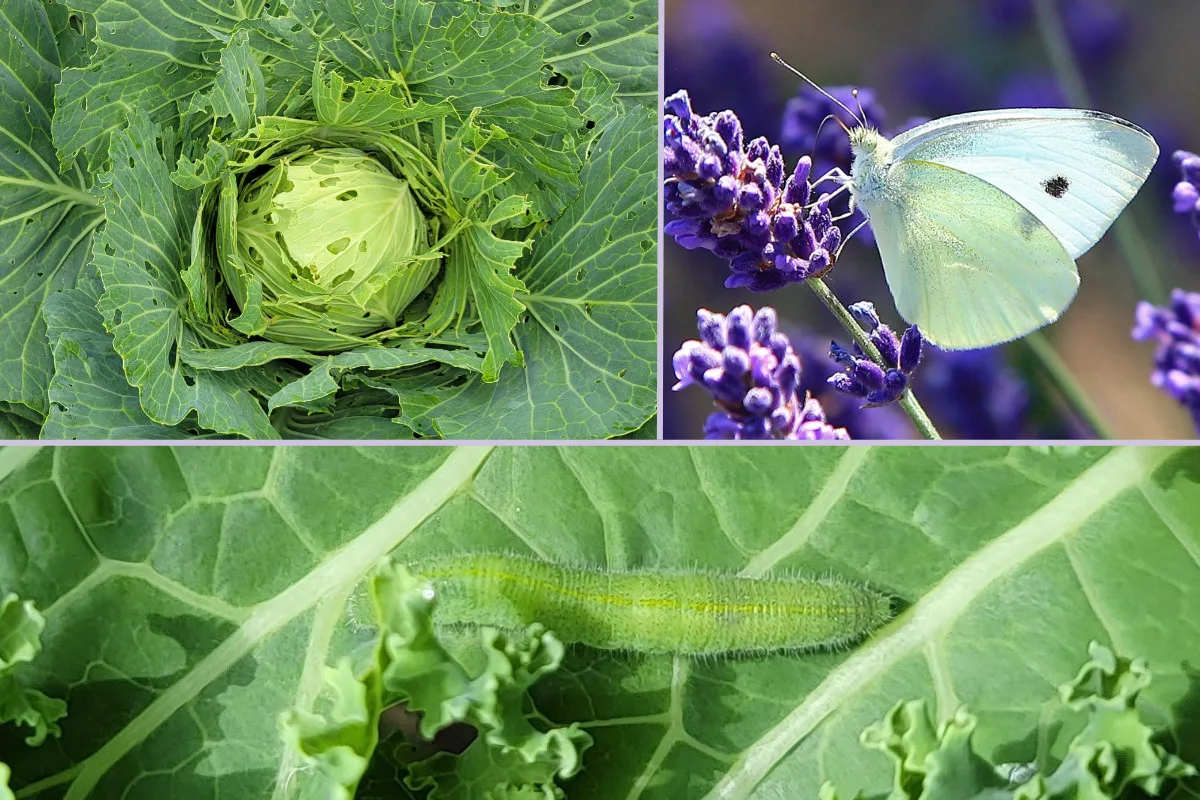
The imported cabbageworm (Pieris rapae) is a notorious pest, known by gardeners all over North America.
As lovely as they are, seeing the small white butterflies flit about your brassicas causes backyard growers and commercial farmers alike to grind their teeth, muttering four-letter words. We know that below those fairy-like butterflies, their perfectly camouflaged caterpillar form is munching away on our crops.
The Imported Cabbageworm: An Introduction
Most of us don’t need an introduction; we’re already more familiar with these pale green, velvety worms than we would like. We’ve spent countless seasons watching them happily munching away on our cabbage, Brussels sprouts and kale.
But every good antagonist has an origin story.
The Small White or Cabbage White, as it’s known in its native Europe, was found in North America in 1860. Like many invasive species, it was most likely a stowaway, hiding among some of its favorite food in a crate of produce bound for North America. The little fare-dodgers were first documented in Quebec City, Canada.
They certainly made themselves at home.
Within 25 years, they could be found as far south as the Gulf Coast and west as far as the Rocky Mountains. Now naturalized, they can be found everywhere in North America. This rapid spread is likely due to how adaptive they are and how many times they reproduce in a season, despite plenty of natural predators here.
The Life Cycle of the Imported Cabbageworm
The life cycle of the imported cabbageworm looks like any other butterfly or moth species: egg, larva, pupa and finally, the pretty adult butterfly. They emerge mid-spring and keep reproducing until the final generation winters over in the pupa form.
Eggs
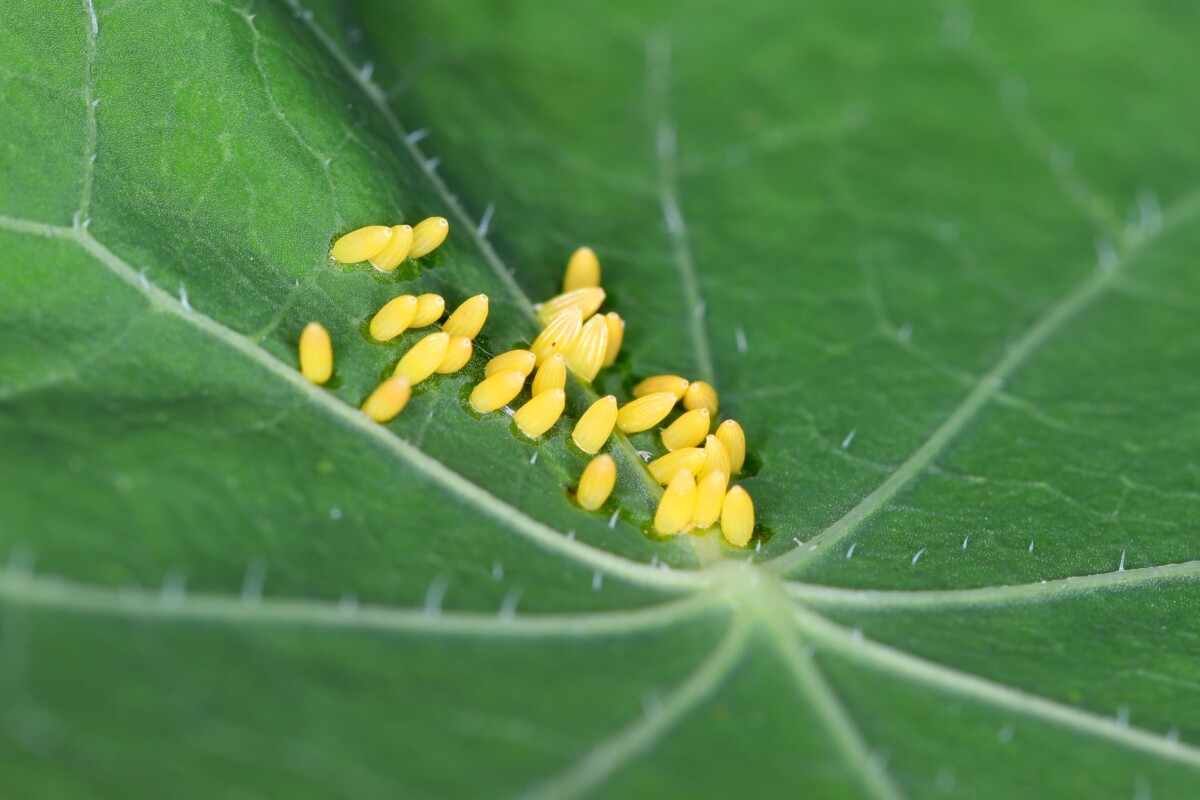
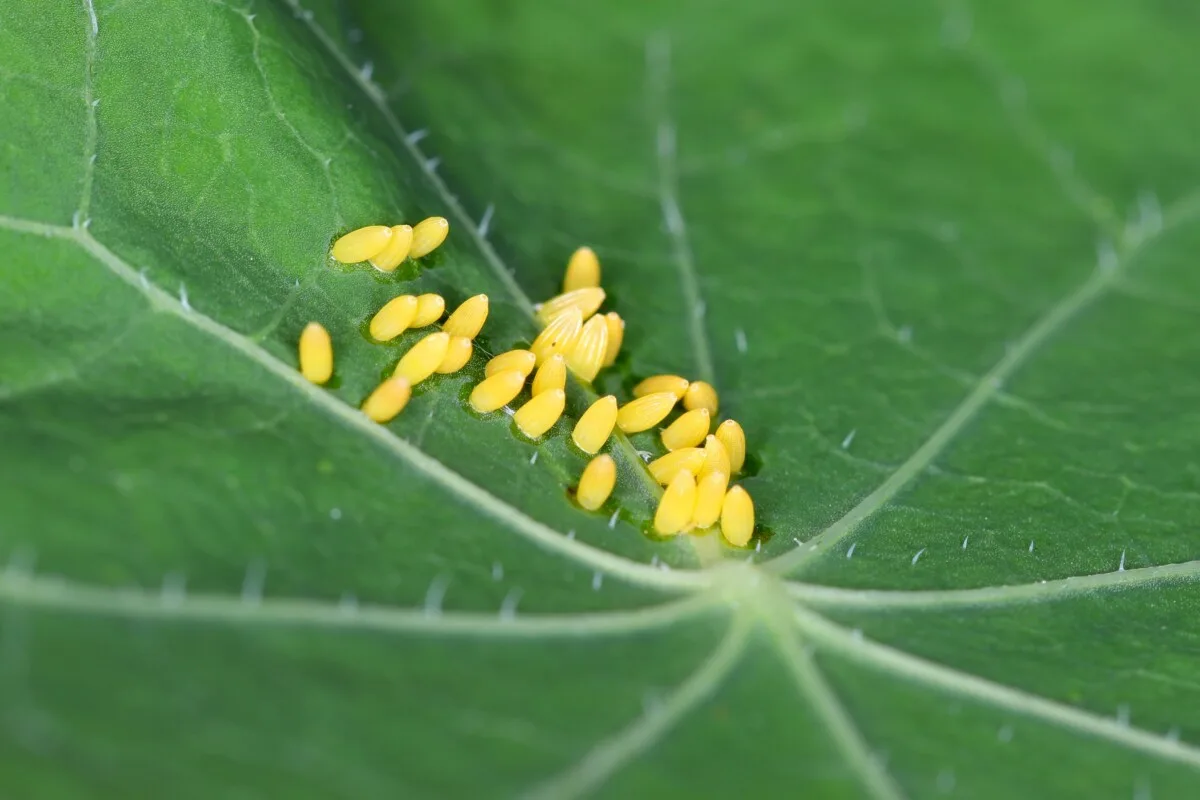
The adult female butterfly lays several hundred yellow eggs – usually one at a time – typically on the undersides of the leaves of the plants they enjoy eating. These eggs are small, measuring around 1 mm in diameter, and are difficult to spot with the naked eye.
Larvae
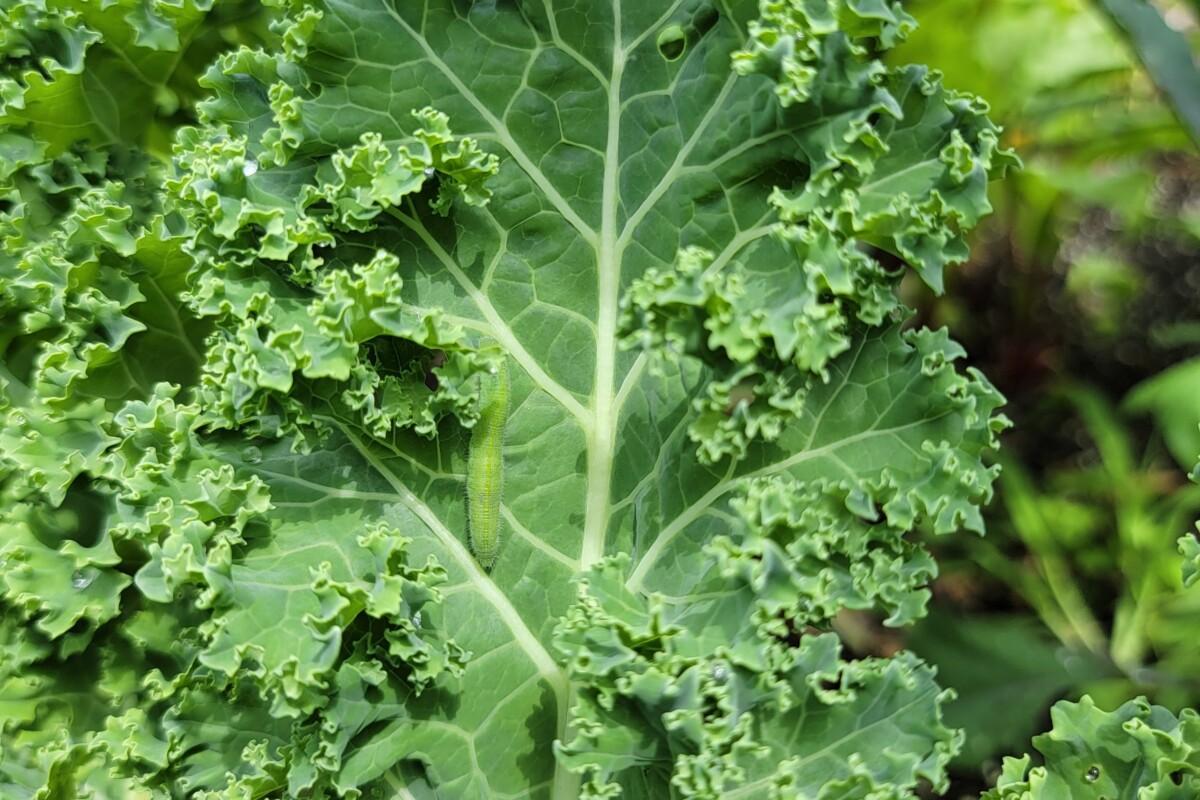
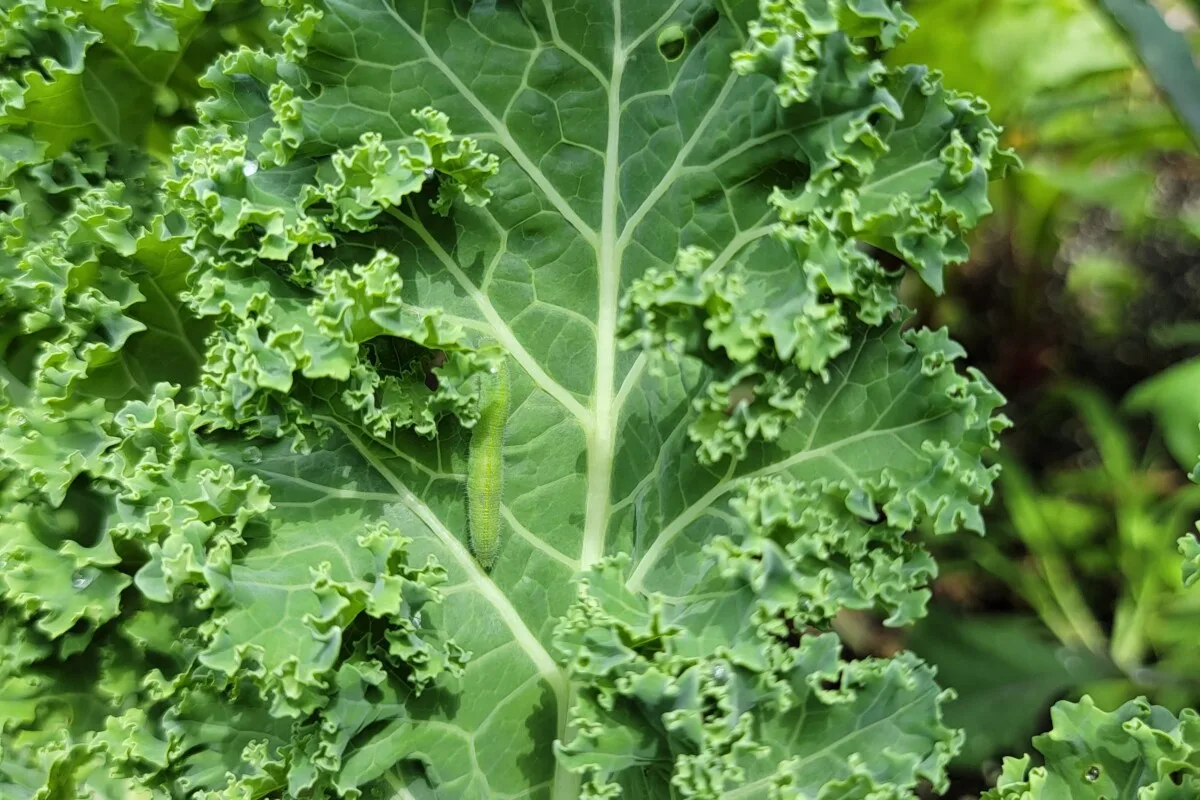
After approximately one week, the eggs hatch into tiny, fuzzy jade green caterpillars. The larvae have a velvety appearance with microscopic hairs and nearly imperceptible yellow stripes running along their bodies. And they certainly don’t stay small; like most teenagers, they eat a lot. It’s during this stage when they cause the most damage and when gardeners notice the tell-tale signs of their presence.
Pupa
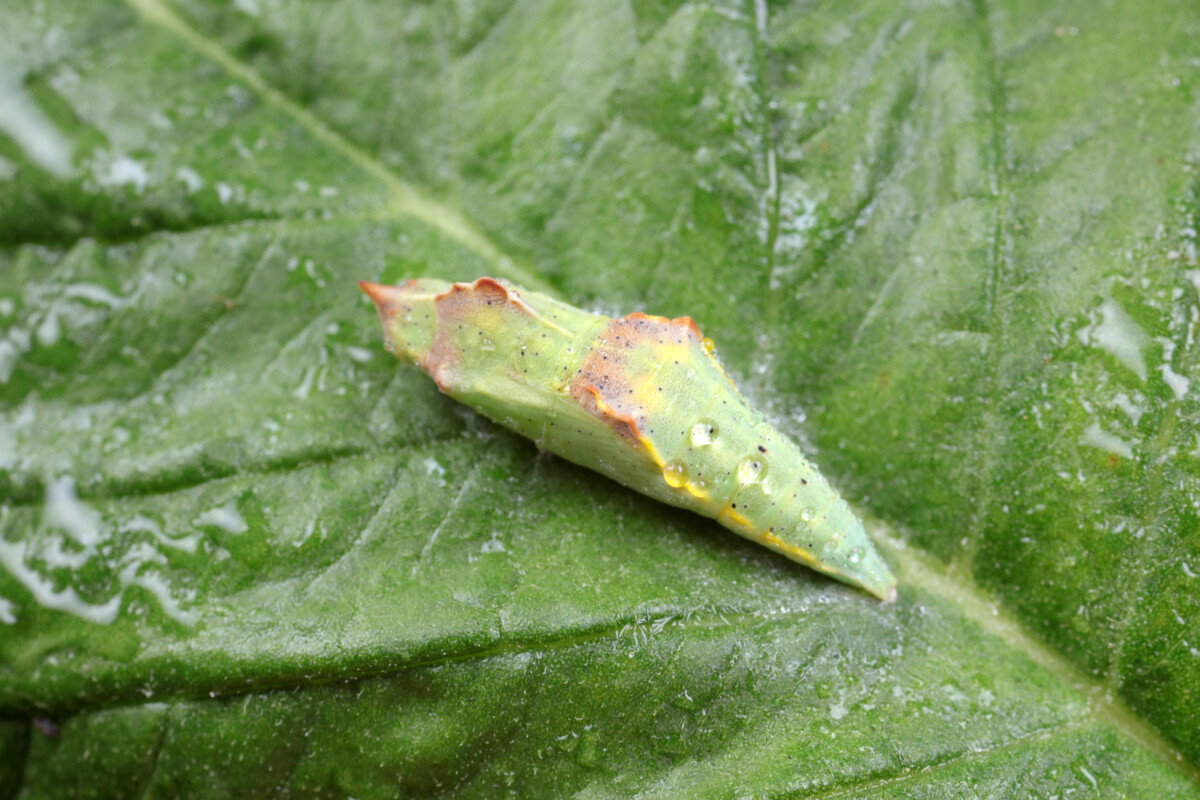
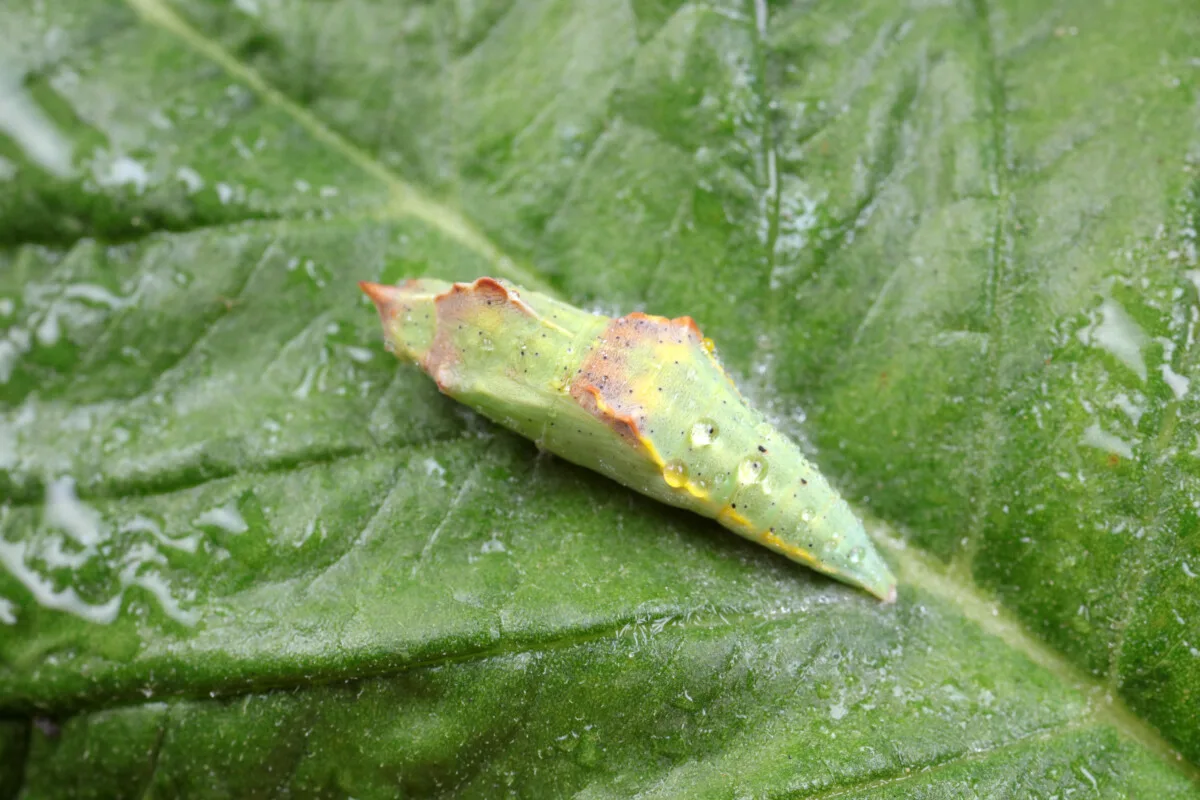
Once the larvae have matured, they undergo pupation. They attach themselves to stems, fences, or other nearby structures, forming a green chrysalis. The pupal stage lasts about one to two weeks, during which the caterpillar undergoes metamorphosis into an adult butterfly.
Adult
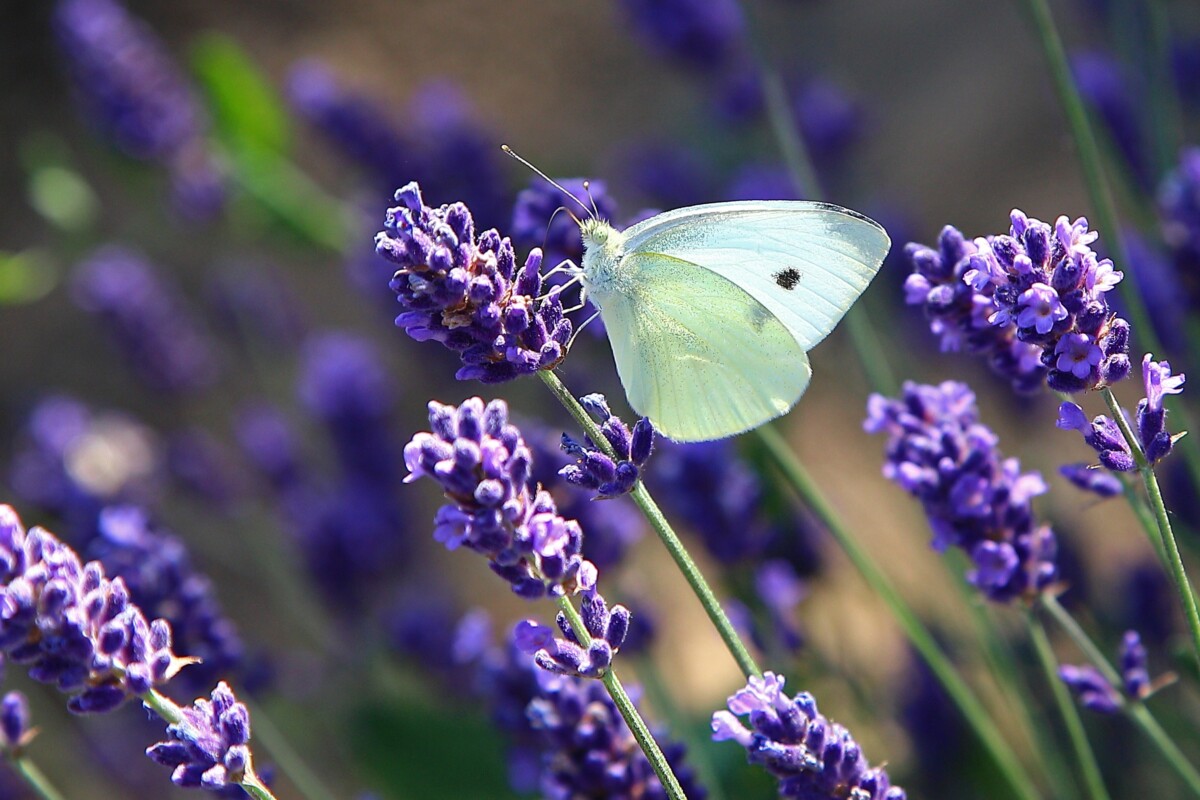

The adult imported cabbageworm is a small to medium-sized butterfly with a wingspan of approximately 1.75in (32-47 mm). It has white or pale yellow wings with dark spots near the tips and black veins crisscrossing the wings. The adults can be seen fluttering around plants during the day, looking for a mate to create the next generation of brassica-destroying eggs.
What makes imported cabbageworm such a problem is their ability to produce two to three generations per season. By the time you’ve eradicated one generation, the next is quietly hatching nearby.
All You Can Eat Brassica Buffet
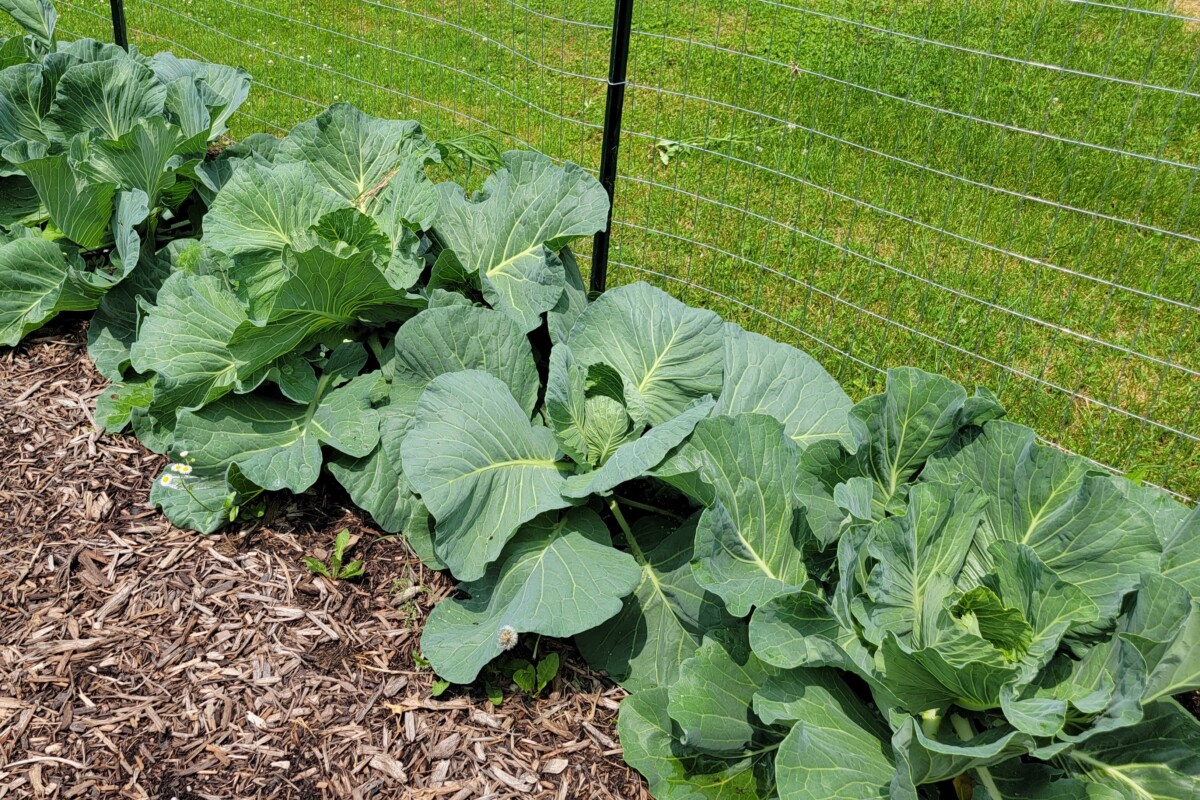
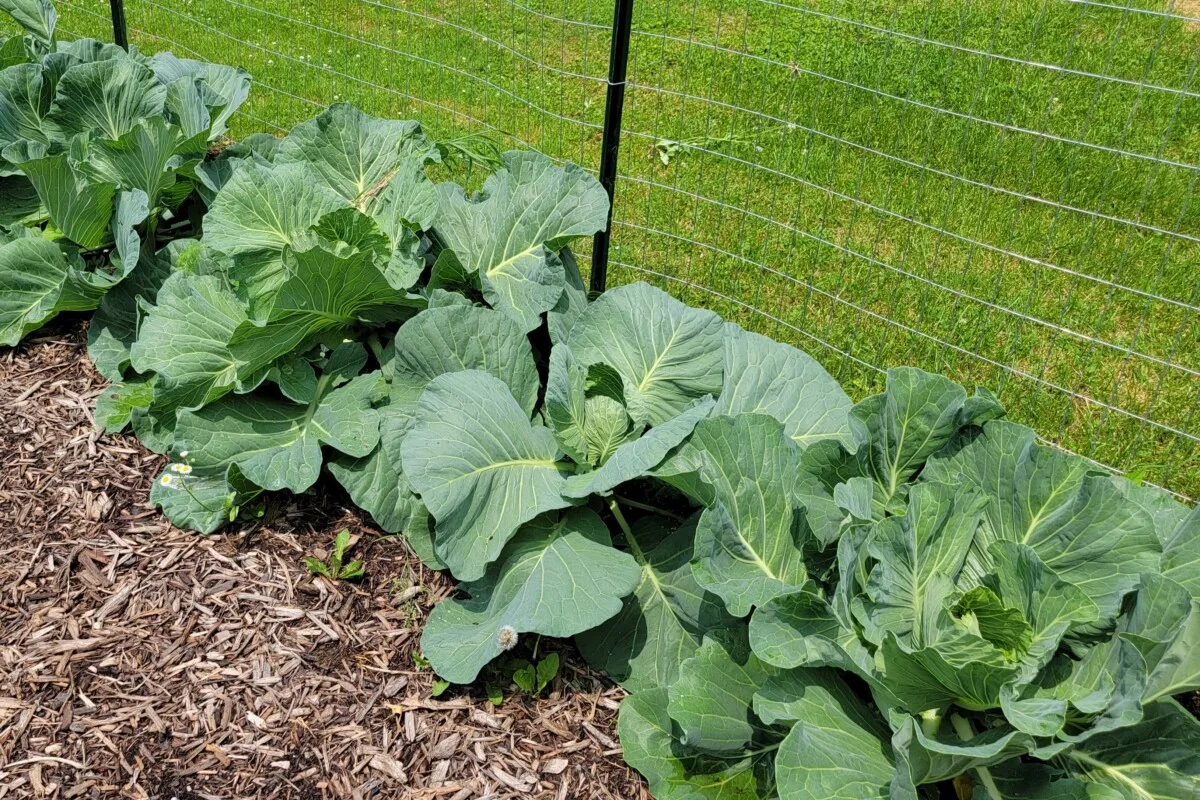
My row of cabbages went from this…
The imported cabbageworm is a voracious feeder and primarily targets cruciferous vegetables: cabbage, broccoli, kale, cauliflower, Brussels sprouts, and radishes.
Again, like most teenagers, cabbageworms are at their most destructive during this phase. Despite how slow they are, they consume a lot for their size. If you’ve got imported cabbageworms, the evidence isn’t hard to spot – irregular holes in the leaves of your brassicas and tunnels through heads of cabbages and Brussels sprouts.
And poop. Lots and lots of caterpillar poop.
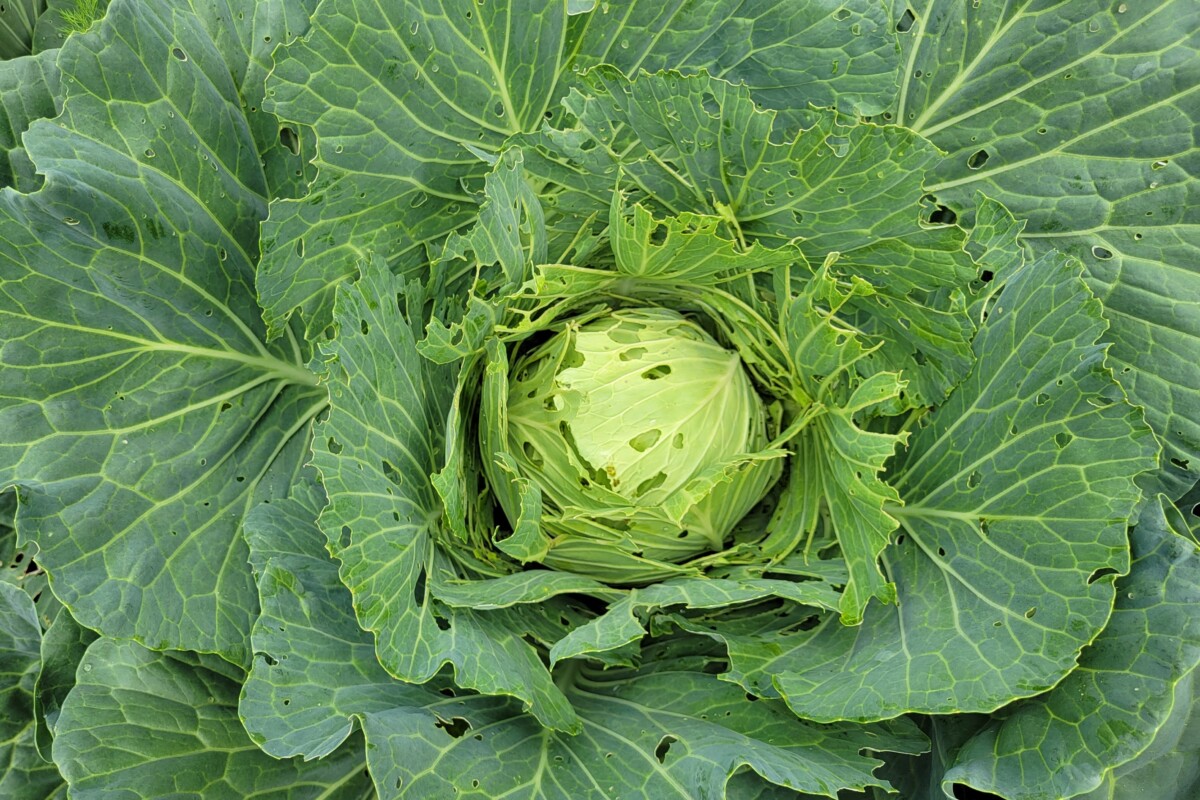
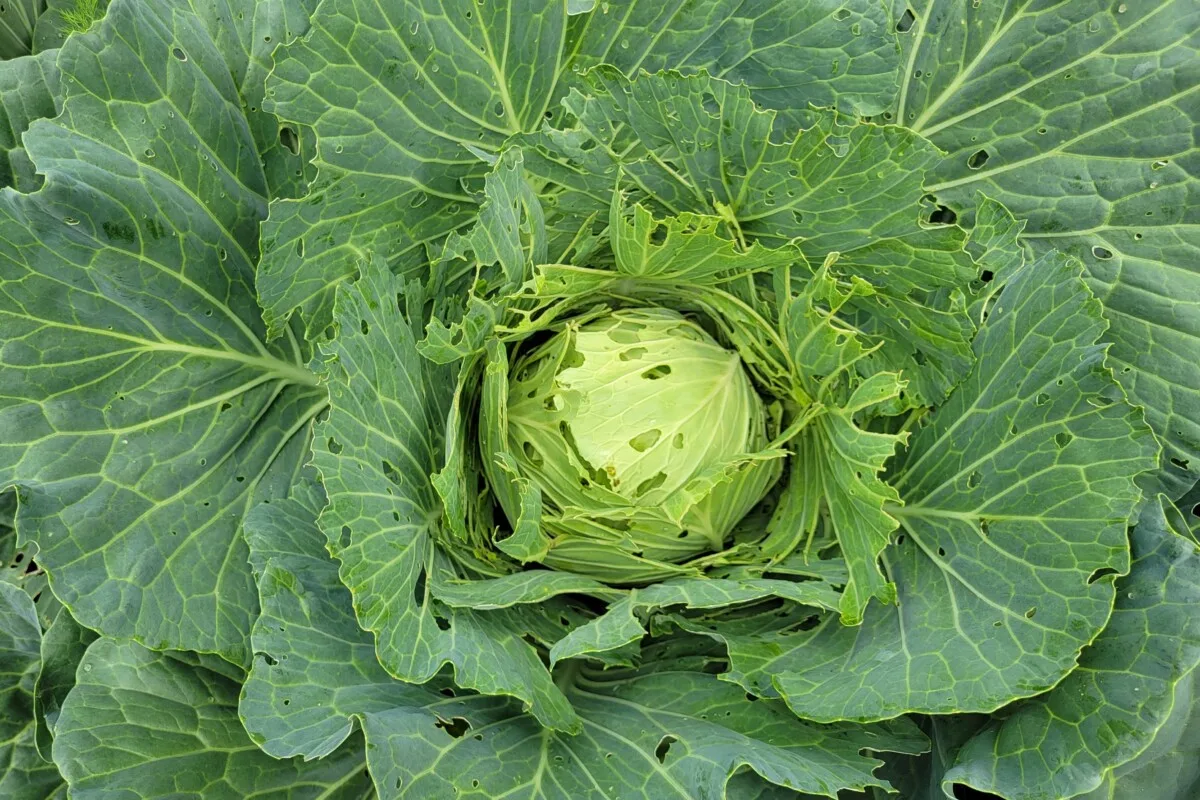
…to this.
You can still eat the produce (if they leave you any), but the resulting damage makes for less-than-appealing veggies. And if the infestation is too great, the damage may kill the plant.
You can see why the imported cabbageworm is such a problem for commercial growers.
Management and Control
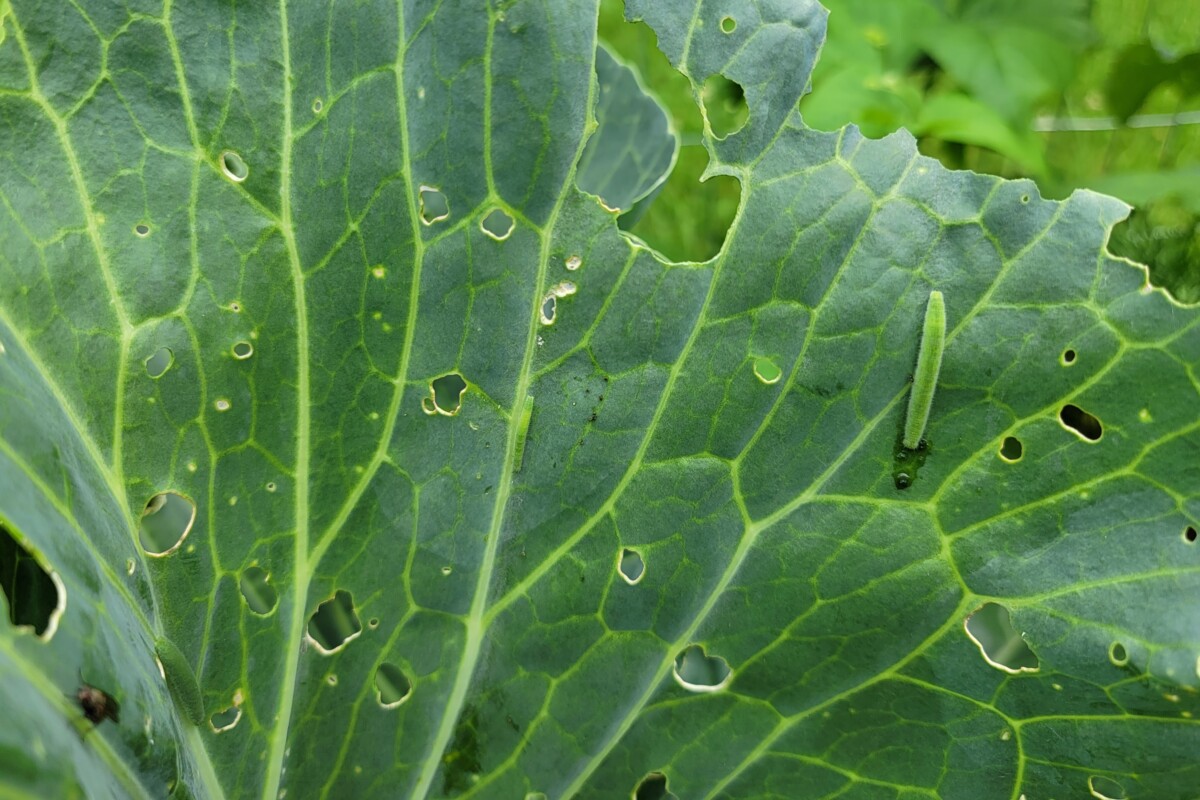
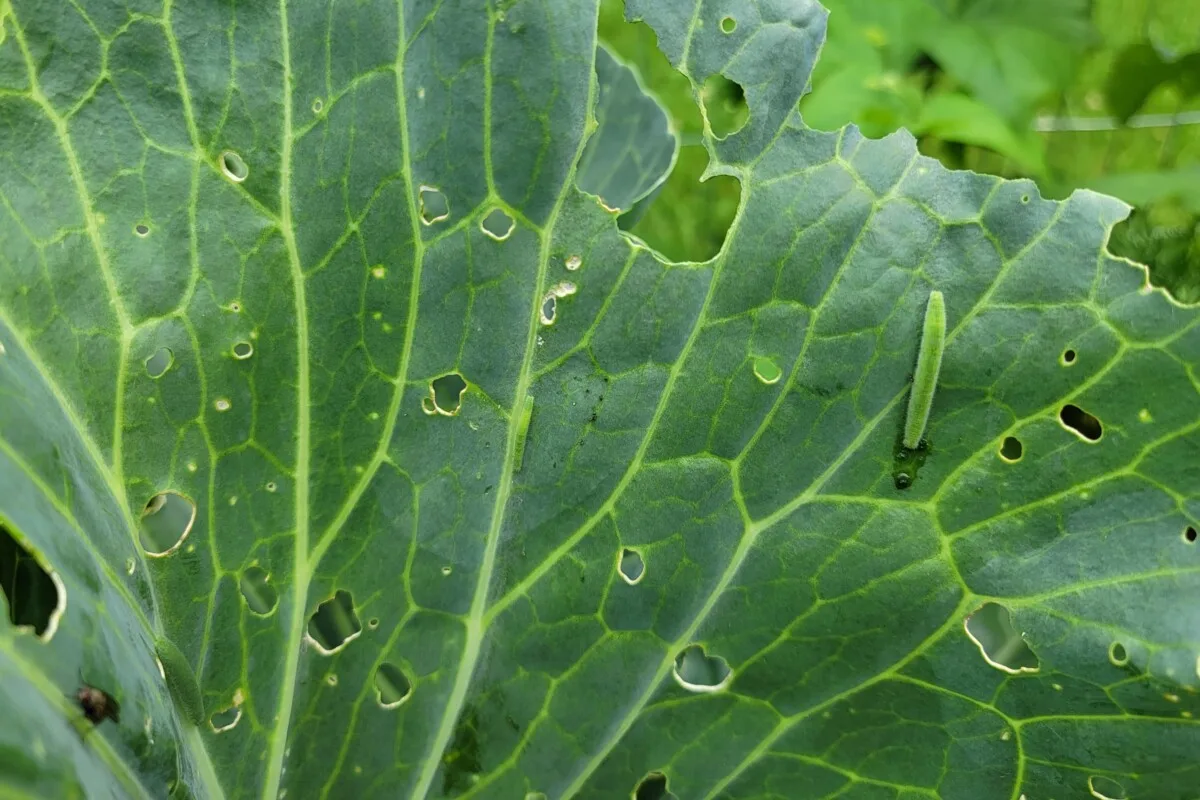
They blend in perfectly! Can you spot all three of them in this photo?
If you live in an area where imported cabbageworm populations are an annual problem (Hi, friend!), you’ll need to implement what’s known as an integrated pest management approach. Let’s take a look at what that involves.
Cultural Control

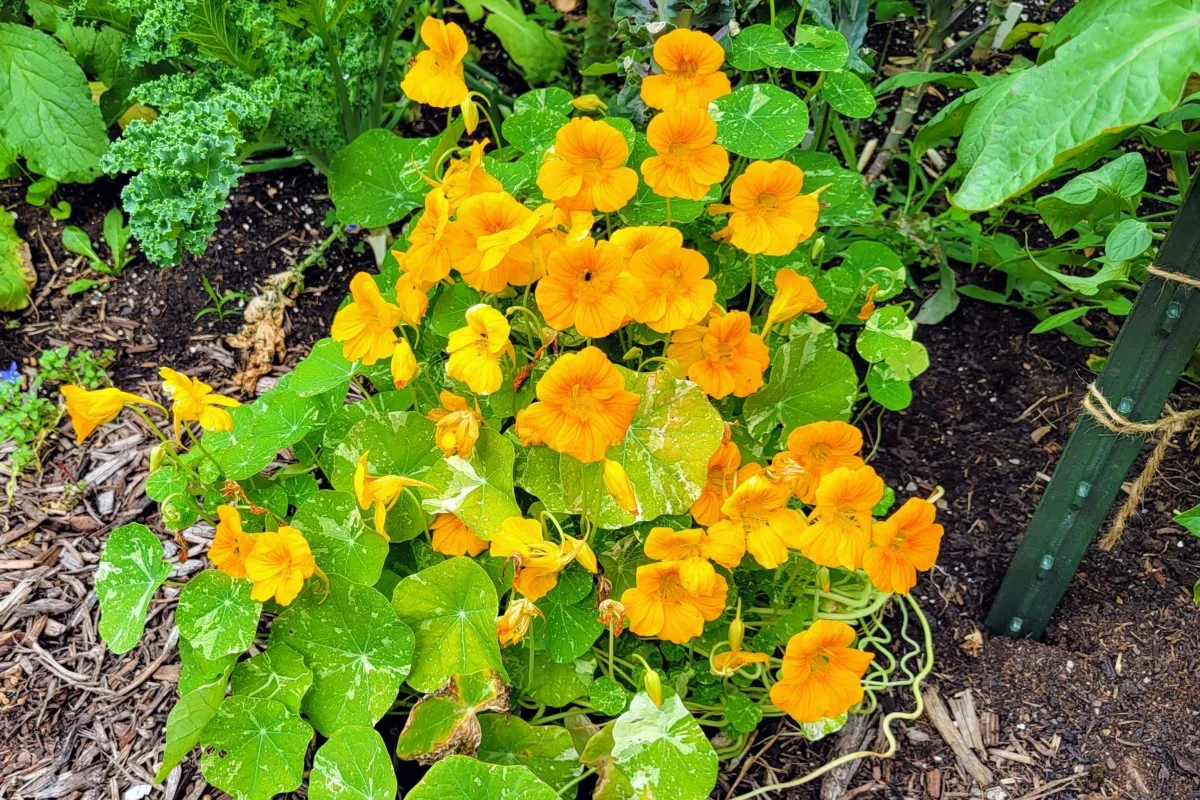
Implementing cultural practices can help reduce the local population of cabbageworms, even if that’s only in your backyard. Cultural control practices include crop rotation, planting trap crops, and employing companion plants such as chamomile or dill to mask the scent of brassicas. Keeping up with weeding (grumble, grumble) is also important as you’re removing alternative places where they can lay eggs.
Mechanical Control
Squash ‘em! Hand-picking the larvae (they only bite cabbages, not humans) and eggs from the plants can be a pain if you grow large quantities of their favorite foods. But it’s quite effective if you have a small garden. When hand-picking eggs and caterpillars, check the undersides of leaves for eggs.
I take a mildly disturbing delight in feeding the larva I pick off my plants to my chickens.
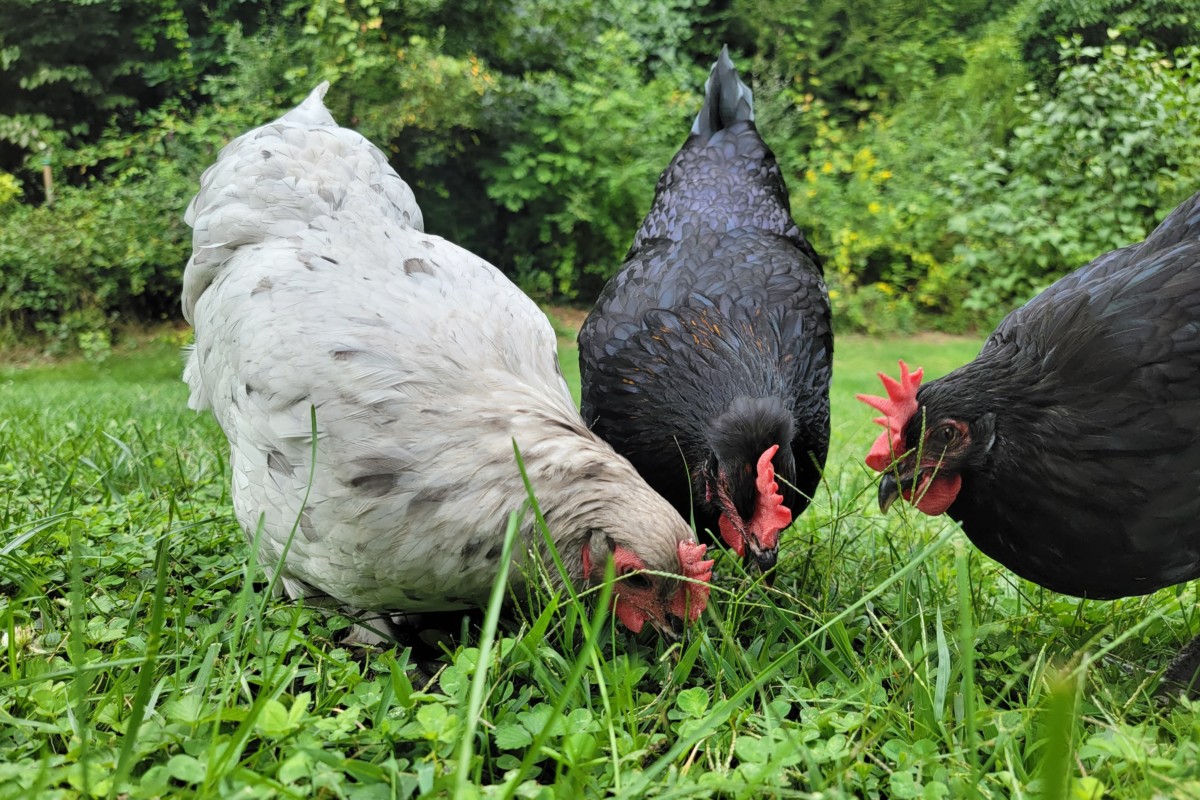
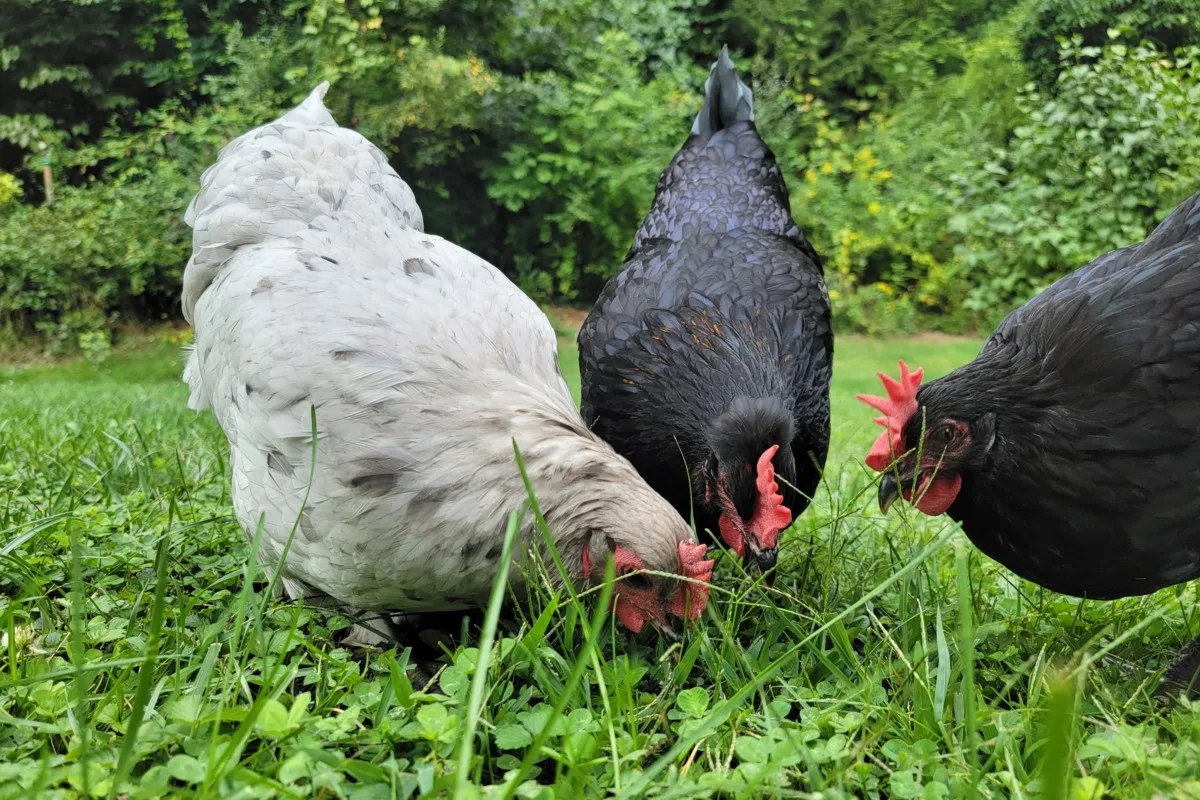
Two years ago, I got desperate and started growing red varieties of cabbage, kale and Brussels sprouts to make it easier to spot the little turds. It’s surprisingly effective.
If you have a large garden or grow a lot of brassicas, you’ll need to take a multi-step approach to controlling imported cabbageworm populations.
Diatomaceous Earth
Food-grade diatomaceous earth is very effective at ridding your garden of cabbageworms. However, it’s important to remember that while it’s completely safe for humans, using food-grade DE in your garden presents a dilemma as it kills all insects that come in contact with it, not just the pests. If you decide to use it on your brassicas, it must be reapplied after each rain.
Biological Control
Encouraging natural enemies of the imported cabbageworm, such as parasitic wasps and predatory insects like ladybugs and lacewings, can help keep their population in check. Plant tarragon among your brassicas, as it naturally attracts all these insects. Having a healthy population of predatory insects goes a long way in protecting all the plants in your garden.
Many songbirds happily eat both the caterpillars and the butterflies, so consider taking measures to attract more birds to your backyard.
You can also use a biological insecticide containing Bacillus thuringiensis ((Bt) that will target the larvae while minimizing harm to other insects and organisms. However, it can still kill other soft-bodied insects you might want to have around.
Natural Pesticide
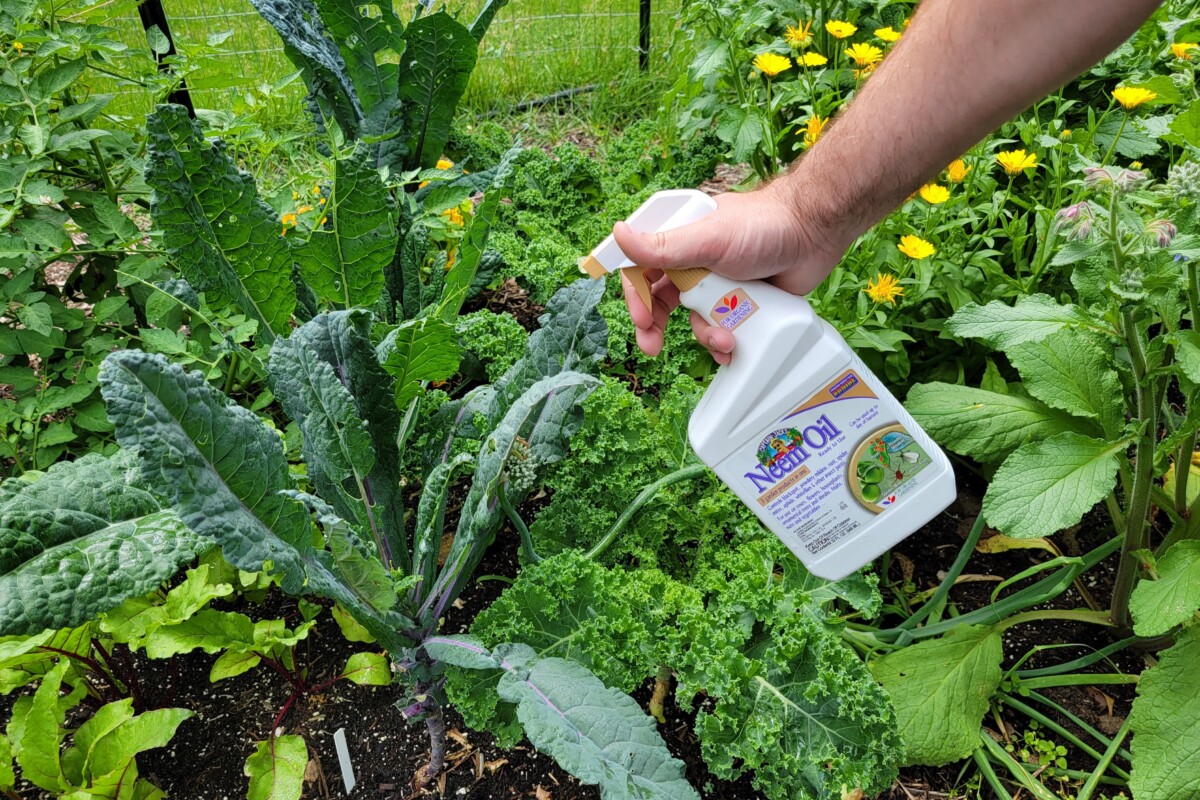
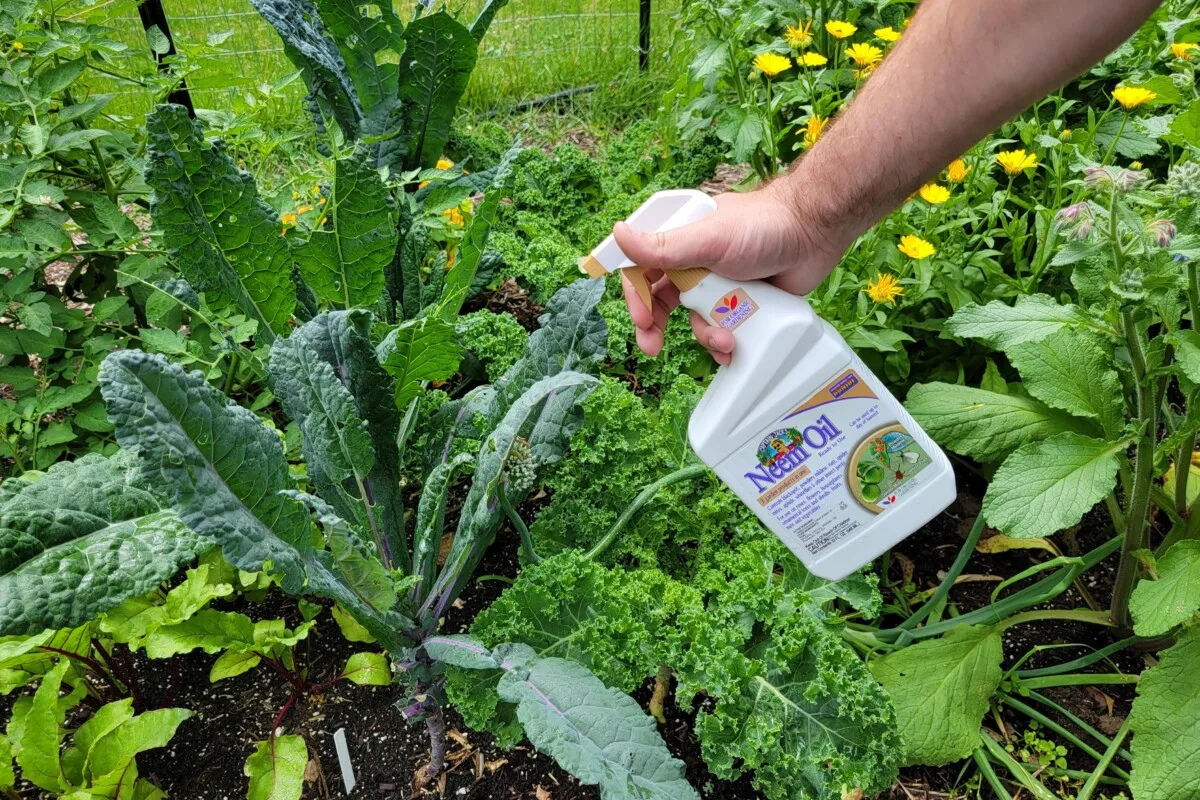
If infestations are severe or other methods prove insufficient, consider using a neem oil spray to coat the effective plants. Neem does work, but you have to spray consistently and reach the undersides of the leaves as well to target any eggs.
As cute and fuzzy as they are, their cuteness wears off when you see how quickly even a small imported cabbageworm infestation can destroy your cruciferous veggies. Understanding its life cycle, feeding habits, and how to get rid of it can ensure a season full of crunchy cabbage, Brussels sprouts and broccoli from your garden.

Get the famous Rural Sprout newsletter delivered to your inbox.
Including Sunday ramblings from our editor, Tracey, as well as “What’s Up Wednesday” our roundup of what’s in season and new article updates and alerts.
